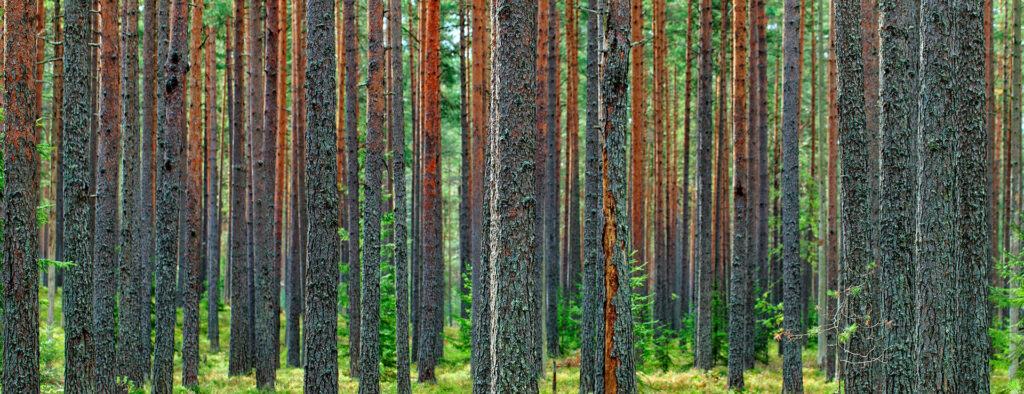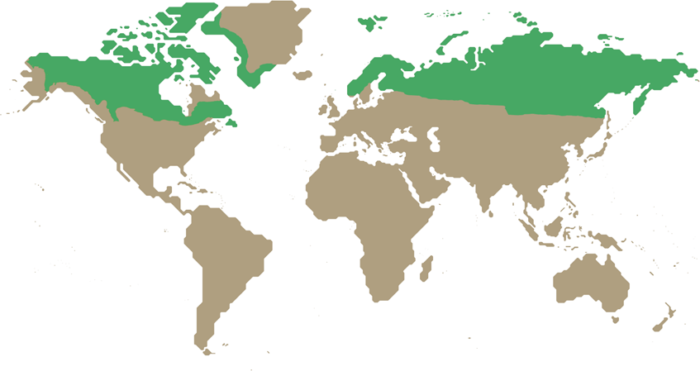Performance and Durability
What to Look For
High pressure treatment
Specifiers should look for timber products that have been subject to specific treatments that improve its ability to withstand elements. The treatment of timber through high pressure impregnation (or “full-cell” impregnation), for example, is one way of improving its performance and durability in certain environments and applications.4 High pressure impregnation
is a process whereby wood is treated with preservatives that impregnate the full wood cell (including the cell wall and the lumen or interior) with chemicals or substances that enhance its resistance to the elements, decay and pests.5 Chemical coatings and preservatives are highly effective in enhancing the
performance of timber in relation to weather, challenging climatic conditions and termite attack.
Timber products that have not undergone high pressure treatment are more vulnerable to the elements. For example, light organic solvent preservative (LOSP) low pressure treated Radiata Pine, a commonly used structural timber material,
is not high pressure treated and accordingly has relatively lower weather resistance and durability. According to Wood Products Victoria, LOSP low pressure treatment is not suitable for applications that will make contact with the ground; unprotected, LOSP only provides short-term water repellence and dimensional stability.6
Compare this to high pressure treatment, such as water-based
full-cell impregnation. This technique involves sealing the timber in a vessel capable of withstanding high levels of vacuum and pressure, and utilising various combinations of pressure, time and solution concentration to ensure maximum retention of the preservative.
Note that no treatment processes penetrate the heartwoods of timber. See AS 1604 Specification for preservative treatment for more information.
Dimensional stability
‘Dimensional stability’ is another key performance indicator for timber products, and refers to the ability of the timber to resist swelling and shrinkage when exposed to changing atmospheric conditions.7 Solid timber will always want to twist and bow by reverting to its natural timber shape. Some species are more susceptible than others. Glulaminating timber removes stresses in the timber and provides longterm straightness. This is particularly important where the product is exposed to weather.
According to the Western Woods Product Association (WWPA), wood is composed mainly of cellulose and lignin, and shrinks as it dries, and swells as it absorbs moisture.8 The WWPA notes that acclimating or drying wood to the appropriate moisture content best suited for the application context and use conditions will improve the wood’s overall performance.
Timber that has been ‘wet sawn’ – which is to say, has not been dried in a kiln or treated after being cut – has low dimensional stability. This is due to wet-sawn timber being prone to expansion and shrinkage, as well as cracking, as moisture levels and temperatures fluctuate. Domestically sourced or imported wet-sawn Radiata Pine is particularly susceptible to damage of this nature.
As it is manufactured from seasoned timber and thus less prone to movement, selecting a glulam product over solid sawn timber will improve dimensional performance especially relating to bowing and twisting over time. Glulam products may experience some dimensional movement from swelling and shrinkage, but this is due to natural timber movement caused by temperature and humidity fluctuations.
Strength performance
Timber’s inherent strength qualities have made it a sought-after and versatile building material for a wide variety of structural applications. For its weight, timber has superior strength performance as compared to other materials, which generally improves with density.10 The emergence of engineered wood products like glulam have delivered even greater strength performance, with timber products now a viable option for constructing mid to high-rise buildings.11 In fact, due to the laminating process, glulam has an excellent strength-to-weight ratio, with strength performance comparable to steel.12
While timber performs well in terms of resisting deformation due to loads and impact, specifiers should seek structurally graded solid or engineered timber for specific structural applications. Strength performance is determined by visual grading or machine grading, the durability rating of the species and –
in the context of domestic construction – mechanical grading.13
For the purposes of specification, use the manufacture’s span tables, which are available online. Generic span tables are also available.
Use in fire prone areas
As timber is a combustible material, compliance with guidelines for use of timber in fire prone areas is a major concern for designers and specifiers. Scientific tests and real examples have demonstrated the strong benefits of using large section glulam timbers against the ravages of fire. Glulam retains structural integrity after removal of the fire source; the timber undergoes charring but does not collapse like steel structures.
Understanding Aesthetics
Specifiers and designers should also carefully consider the aesthetics of any exposed construction elements to ensure overall visual consistency. The surface finish and level of resolution of structural timber needs to be carefully considered.
Different wood types and manufacturing methods can result in a variety of visual effects that may or may not be consistent or desirable with the overall aesthetics of the final structure. Domestic or imported sawn-treated pine can have an unattractive, unpainted finish that can detract from the facade or structure. Pre-primed timber products preclude a stained or
natural finish, so design options are often limited to the available factory finishes. Crucially, LOSP low pressure treated timber can be prone to sap bleeding, which is unsightly and may
result in staining.
Exterior glulam is typically supplied with a smooth, dressed surface, either natural or with a base primer coat. Note that exterior use glulam is a structural member. Finishing (that is, painting) on-site needs to be carefully considered. A painting contractor should be consulted for expert advice. All glulam can have some unsightly defects such as splits, staining, transport damage, resin bleed, broken knots or other blemishes.
Appearance grading refers to applications where strength is
not the primary consideration. Posts and beams are paint-grade quality only. Some filling may be required prior to coating. Posts are visually graded to three faces only, whereas beams are visually graded to one good face.
Due to the high pressure impregnation process, some cracking and splits are unavoidable and not considered a defect. Some minor surface delamination, and other imperfections such as broken knots and small holes, are allowed. Surface cracks
do not affect the performance of the product. According to best practice, painting contractors should specify the level of preparatory work required to meet the client’s needs prior to final coatings being applied.
Minimising Environmental Impacts
Specification of engineered timber products such as glulam occurs against the backdrop of a market increasingly concerned with minimising environmental impact and promoting sustainable practices. The architecture and construction industry and end users alike require solutions that are produced in a sustainable manner, have a small environmental footprint, and result in more efficient energy use.
While it’s accepted that the timber industry can have a negative impact on the environment,14 wood as a building material has many positive environmental characteristics including low embodied energy, low carbon impact, and high sustainability.15 Numerous studies have also shown that the amount of energy needed to produce wood products is significantly less than that required by similar products made out of other materials.16 In addition, wood is a renewable resource and, through proper, sustainable management of forests, the production of wood products can be continued indefinitely.






